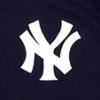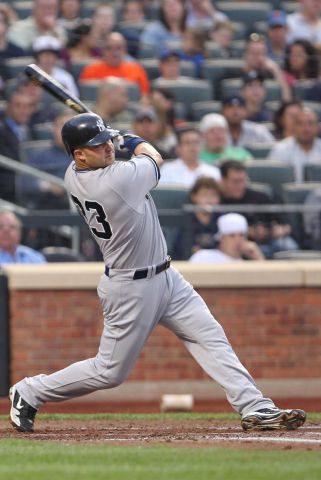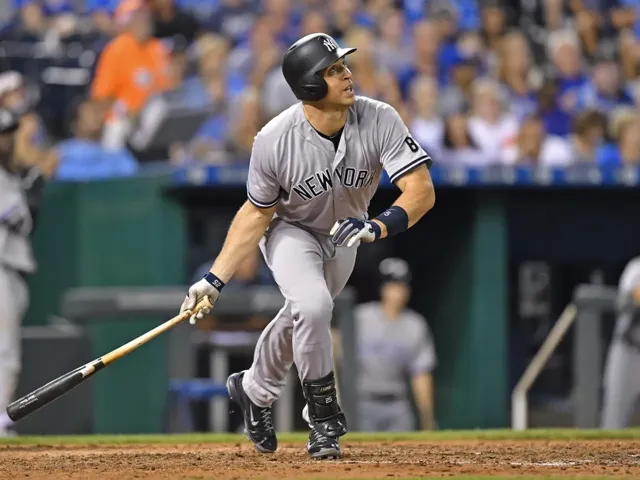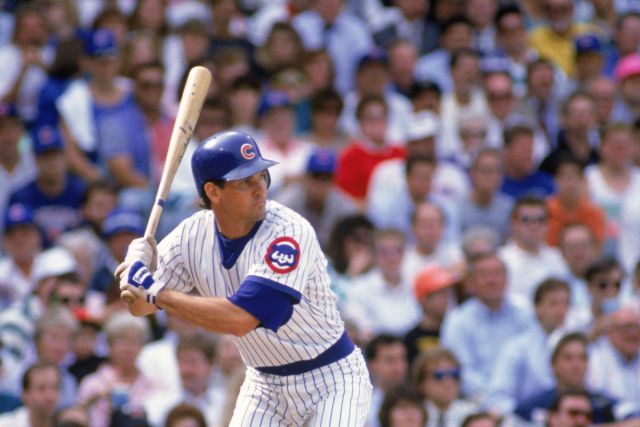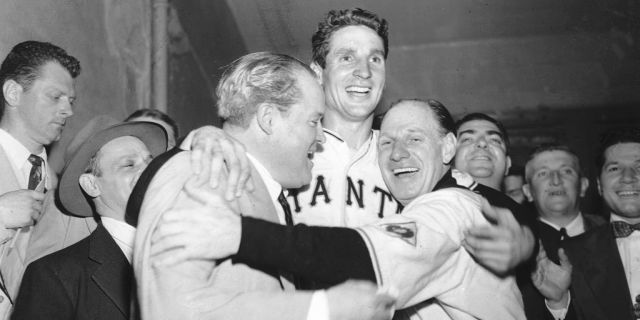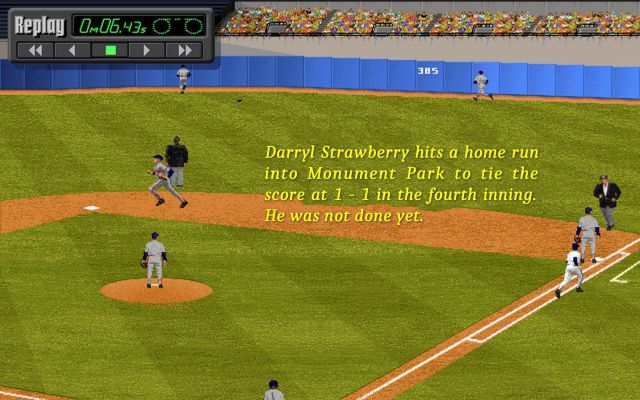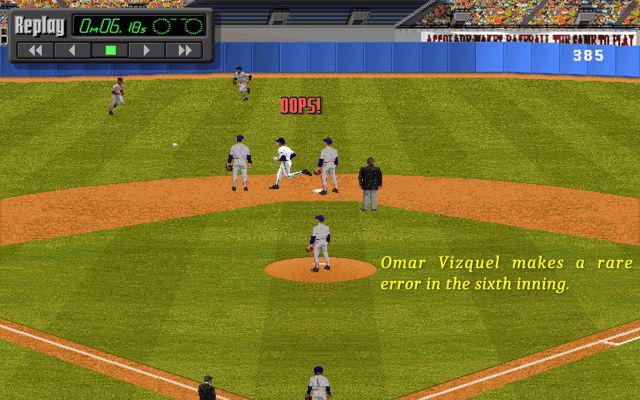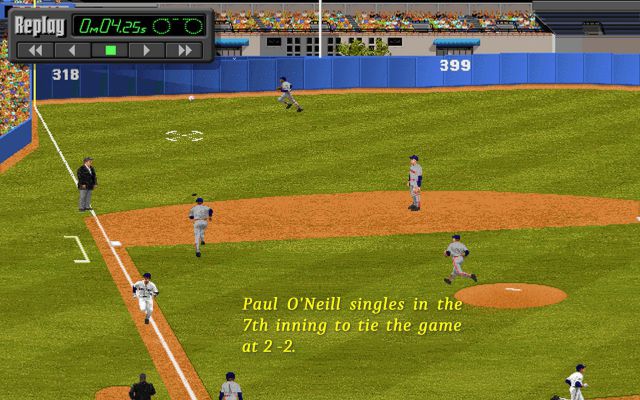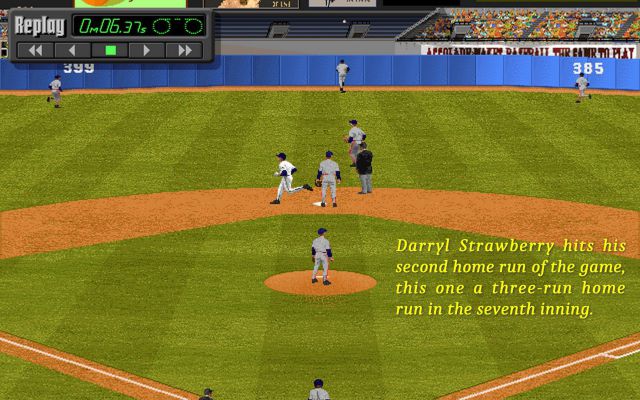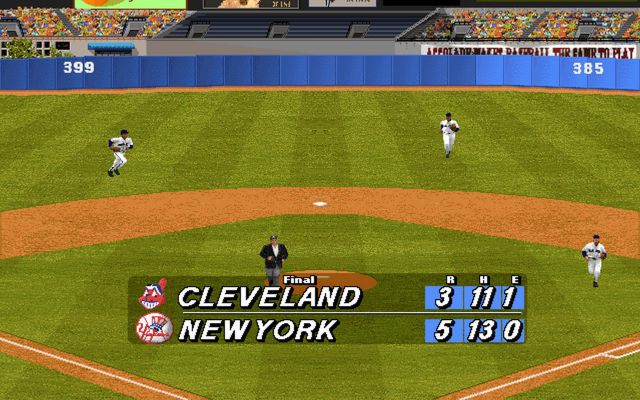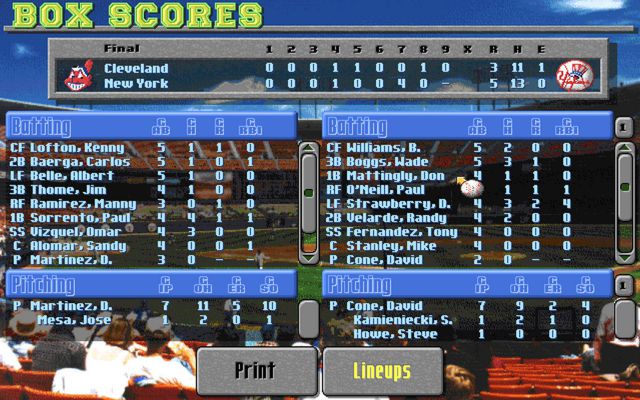-
Posts
26950 -
Joined
-
Days Won
82
Content Type
Profiles
Forums
Downloads
Everything posted by Yankee4Life
-
What an unbelievable game this was. No game is ever out of reach in Fenway Park and this one proved it. Swisher, Teixeira help Yankees rally from 9 runs down to blow out Red Sox BOSTON — Acts like this figured to be tougher for these 2012 Yankees. These Yankees traded their offensive player with the most upside, Jesus Montero, in order to upgrade their starting pitching. And that upgrade, Michael Pineda, experienced a setback in his right shoulder yesterday, and now nobody knows when, or if, Pineda will make his Yankees debut. But the Yankees pulled off their most important, most improbable victory of this young season yesterday, coming back from a nine-run hole to post a 15-9 win over Bobby Valentine’s hapless Red Sox at Fenway Park, because of an early improvement from an unlikely source. Nick Swisher? The guy who seemed to come up so small so often in pressure situations is now thriving in his walk year? The guy who, if the Yankees are serious about cutting payroll, won’t be back next year? “Last year was a super stressful season for me, man,” Swisher said, after he set a new career high with six RBIs. “I am not going to be stressed out like that this year. I’m going to have as much fun as I can and just enjoy it. This is such a great place to play. I’m just enjoying every minute of it.” When Boston’s starting pitcher Felix Doubront put up a zero in the top of the fifth, making the game official, the Yankees trailed by a 7-0 margin, with the Red Sox having knocked out Yankees starting pitcher Freddy Garcia in the second inning. Rookie David Phelps, finally appearing human, allowed two more in the bottom of the fifth. This one looked over, with Boston cruising to a much-needed win. Yet as manager Joe Girardi said later, echoing his mentor Don Zimmer: “In this park, a lot of things can happen.” It was Swisher whose seventh-inning grand slam changed the game, pulling the Yankees within 7-5. His fellow switch-hitter Mark Teixeira added a three-run blast, scaring the daylights out of the Red Sox before they escaped the inning up, 9-8. The Red Sox are a train wreck most of all because of their bullpen, so give Valentine credit for going to his closer, former Yankee Alfredo Aceves, to try to get a six-out save when Franklin Morales gave up a leadoff single to Eduardo Nunez in the eighth. To whom else could Valentine turn? Aceves, however, pitched horribly. He walked Derek Jeter, the other guy in this lineup who has provided an early improvement. And then Swisher slammed a double off the center field wall, driving home Nunez and Jeter to give the Yankees a 10-9 lead. Swisher, standing on second base, emitted a joyful holler. “If you come back from nine runs against anybody, it’s a cool thing,” said Teixeira, who homered once from each side of the plate. “But here in Boston, it makes it a little more fun.” “Against the Red Sox, to be able to come back and pull that win off, that’s a big win for us, man,” said Swisher, whose 20 RBIs lead the American League. “That’s a huge momentum shift for us. This team, we never give up.” Swisher started last season horribly, compiling a lowly .639 OPS with just three homers through May 29, before waking up some — and then contributing a characteristically poor postseason. He admits now that he let his contract situation get to him. The Yankees held a $10.25 million option on him for 2012 that they exercised. “That option, I’ve never been through something like that,” Swisher said. “This year, I’ve done all my work in the offseason. I’ve done all the things that I wasn’t ready to do, worked with my sports psychologist, stuff like that. I’m just in a good place. Really just enjoying everything. Whether I go 4-for-4 or 0-for-4, my mental preparation stays the same every day.” The Yankees want to lower their payroll to $189 million by 2014, to save money on the luxury tax, and the only way they can do that while retaining Swisher is by letting either Robinson Cano or Curtis Granderson go. That’s unlikely. So the Yankees will enjoy this unexpected upgrade while it lasts — and that goes double for this Red Sox swan dive. April 21, 2012: Yankees rally from 9 runs down to blow out Red Sox While fans lament the Red Sox collapse of 1978, their 2011 collapse was actually worse. The Sox entered September with a nine-game lead only to lose not only the division, but a wild-card berth as well in what was an epic final day of the 2011 season. There were reports that the Red Sox pitchers had been drinking beer and eating fried chicken in the clubhouse and dugout during games. It had appeared that skipper Terry Francona, who led the Red Sox to two World Series titles and helped break the “Curse of the Bambino,” had lost control of his players. The chicken and beer scandal led to the end of Francona’s tenure in Boston. The front office decided that the new Red Sox manager would need to restore order in the clubhouse, and that Bobby Valentine was the man to do just that. The Red Sox began the 2012 season on the road, where they lost five of their first six games. It seemed that the friendly confines of Fenway Park could be the remedy as they won the first three of four games in their home opening series against the Tampa Bay Rays. After dropping the last game against the Rays, the Red Sox were then swept by the Texas Rangers and their hated rival Yankees came to town for a two-game series. The first game was the 100th anniversary of the opening of Fenway Park and resulted in another Red Sox loss. Red Sox fans could only hope for a different result in the second game. After the the Yankees went down in the top of the first, the Red Sox’ bats heated up quickly against Freddy Garcia, starting with Ryan Sweeney reaching out across the plate to bloop a one-out double down the left-field line. After Garcia got Dustin Pedroia to hit a pop foul for the second out, Adrian Gonzalez just missed a home run; the ball bounced over the short fence in right field, scoring Sweeney and putting the Red Sox on the board. David Ortiz’s double to left scored Gonzalez, giving the Red Sox a 2-0 lead. The Red Sox continued to hammer Garcia in the second, starting with a one-out single by Cody Ross, who took third on a double by Darnell McDonald off the left-field wall. Mike Aviles’s single scored Ross and sent McDonald to third. He scored on Sweeney’s sacrifice fly to right. After swiping second base, Aviles scored on an opposite-field single by Pedroia that ended Garcia’s afternoon. Gonzalez’s flyout to deep center field off reliever Clay Rapada ended the Boston threat with the home team leading 5-0. Boston tacked on two more in the third. Ortiz led off with a single to right field. David Phelps replaced Rapada and hit Kevin Youkilis in the hip with his second pitch. Jarrod Saltalamacchia’s single to right loaded the bases with no outs. McDonald’s sacrifice fly scored Ortiz and Aviles’s single plated Youkilis, extending the Red Sox lead to 7-0. Saltalamacchia led off the bottom of the fifth with a 420-foot double to the deepest part of Fenway Park in center field. Ross’s blast to center cleared the fence and made it 9-0, Red Sox. Red Sox starter Felix Doubront kept the Yankees off the scoreboard for the first five innings and struck out Robinson Cano and Alex Rodriguez to start the sixth. Switch-hitting Mark Teixeira, looking for a fastball from Doubront, deposited a 2-and-1 offering into the seats above the left-field wall, putting the Yankees on the board, 9-1. Valentine replaced an effective Doubront with reliever Vicente Padilla to start the top of the seventh. Andruw Jones struck out looking to lead off the seventh. Russell Martin hit an opposite-field bloop single to right. Eduardo Nuñez reached safely on a weak grounder to third. After Derek Jeter walked, Nick Swisher stepped to the plate with the bases loaded and none out. Swisher entered the 2012 season trying to shake off another poor postseason performance, and was off to a great 2012, which was the final year of his contract after the Yankees exercised their team option. “Last year was a super stressful season for me, man,” Swisher said. “I am not going to be stressed out like that this year. I’m going to have as much fun as I can and just enjoy it. This is such a great place to play. I’m just enjoying every minute of it.” Swisher continued with his hot start by smacking an opposite-field grand slam over the left-field wall, inching the Yankees closer at 9-5. Cano followed up with a double off the wall, ending Padilla’s afternoon. Off Matt Albers, Rodriguez hit a groundball to short that Aviles bobbled, giving the Yankees runners at the corners with none out and Teixeira stepping to the plate. Teixeira, who had homered from the right side of the plate off lefty Doubront in the previous inning, batted from the left side against the righty Albers. With a 2-and-2 count, Teixeira reached out and smacked an outside pitch over the wall for an opposite-field three-run homer, bringing the Yankees within one: 9-8. After scoring seven in the seventh inning, the Yankees weren’t done beating up the Red Sox bullpen. In the eighth lefty Franklin Morales, who retired the Yankees in the seventh in relief of Albers, surrendered a leadoff single to Nuñez, putting the tying run on first. Valentine called on closer Alfredo Aceves for a six-out save. After walking Jeter, Aceves surrendered a sky-high double to Swisher that bounced off the center-field wall, scoring Nunez and Jeter, giving the Yankees a 10-9 lead and Swisher six RBIs for the game. After walking Cano intentionally and then walking Rodriguez to load the bases with none out, Aceves surrendered a line-drive double to Teixeira that bounced over the short wall in the right-field corner. Swisher and Cano scored, Rodriguez went to third, and the Yankees now led 12-9. Like Swisher, Teixeira also had six RBIs. After intentionally walking Curtis Granderson to load the bases again, Aceves was replaced by Justin Thomas. Valentine was met with a chorus of boos when he marched onto the field to lift Aceves; he responded by tipping his cap to the fans. He later said, “I’ve been booed in a couple of countries; a few different stadiums. I don’t want to be booed.” It took only two pitches to get two outs as Raul Ibañez hit into an unassisted double play at first base. But Martin sent the first pitch he saw from Thomas to the center-field wall for a double, scoring Rodriguez and Teixeira and extending the Yankees’ lead to 14-9. Jeter’s single off Junichi Tazawa plated Martin, giving the Yankees a 15-9 lead that would stand as the final score. “You’re down 9-0 and Tex hits what looks like an innocent home run. Then we come back with back-to-back seven-run innings,” Yankees manager Joe Girardi said after the game “I don’t think I’ve ever been a part of that.” “I don’t like to lose. I don’t know anybody who does,” Aviles said. “This wasn’t fun at all. I don’t want to see it if it gets any worse.” While it might not have gotten any worse than this particular game, the Red Sox did do plenty of losing in 2012, 93 games to be exact, and finished in last place. Valentine was fired after the last game of the season.
-
6 out of 10, 69 seconds. I had three where-did-I-go-to-college questions. I missed all three. Just once I'd like to be asked where Ken Stabler went to college (Alabama.)
-
June 23, 1984: The Sandberg Game The Chicago Cubs were struggling. For the first two months of the season, they were a cute story. Since mid-May, the lovable losers of recent years had spent much of their time in first place in the National League East. Starting on June 6, however, the team lost ten of 16 games. The lowlight was a four-game sweep in Philadelphia in which they were outscored, 33-13. That knocked them out of the top spot, and it looked for a while like things were reverting to form at 1060 West Addison. As the day began on June 23, the Cubs found themselves in third place, a game and a half behind the division-leading Mets. The St. Louis Cardinals were in town, a team that was barely treading water at 34-37. The Cubs sent Steve “Rainbow” Trout to the mound, while the Cardinals countered with virtual-unknown Ralph Citarella, making his first big-league start. It was a nationally televised Saturday afternoon Game of the Week on NBC, with Bob Costas and Tony Kubek doing the honors. Before the contest began, Kubek observed, “The wind…blowing in from right field, so it’ll kill any ball hit to the right field sector. Anything hit to left-center will be…given a little help, if it’s up in the air.” It looked at the outset like the Cubs’ swoon was going to continue. Trout bombed early, and by the time they came to bat in their half of the sixth, they were down 9-3. Suddenly, however, their bats woke up. They scored five runs in that frame, sending Citarella to the showers, to quickly turn a yawner into a tense, exciting one-run game. That is how the score remained until the bottom of the ninth. “This has been one entertaining ball game, folks,” Costas commented, just in case any of the viewers at home didn’t already know it. On the mound for St. Louis was their ace reliever (and former Cy Young Award-winner with the Cubs) Bruce Sutter, who had entered the game in the bottom of the seventh. He had faced four batters so far, and gotten four harmless groundball outs. Leading off for the North Siders was their fine young second baseman Ryne Sandberg, who already had three singles and four RBIs in the game. On a 1-1 count, Sandberg took Sutter downtown, drilling a hanging curve over the left-center-field bleachers, onto Waveland Avenue. The game was tied, to the delight of the frenetic Wrigley Field faithful. The Cubs got the winning run to third base with two out in the person of Gary Matthews, but a groundout ended the inning, sending the game into extras. St. Louis put a quick stop to the buzz going on at the ballpark, by scoring a pair of runs in the top of the tenth. Sutter was still on the mound, and Chicago appeared to have its work cut out as the bottom half of the inning loomed. Two quick ground-ball outs did nothing but deflate any remaining air left in the Cubs’ party balloon. But Bob Dernier walked, and Sutter was left to again face Sandberg. The count went to 1-1, at which point Costas began rapidly reciting to the TV crowd that “our game today was produced by Ken Edmundson, directed by Bucky Gunts, Mike Weisman is the executive producer of NBC Sports, coordinating producer of baseball Harry Coyle. One-one pitch.” Sutter served. Sandberg swung. Kubek belted out a distended “Ooooooh myyy!” Costas was surely more descriptive: “And he hits it to deep left center! Look out! Do you believe it! It’s gone!” Both said nothing for the next 50 seconds. Viewers across the nation watched dumbfounded as 38,079 people suddenly went certifiably insane at Wrigley Field. In the next booth over from Costas and Kubek were Harry Caray, Lou Boudreau, and Milo Hamilton, who had spent the afternoon taking turns describing the game for Chicago’s WGN radio. As Sandberg’s second home run soared toward the bleachers, the three went into a collective fit of frenzy, and Caray’s voice was nearly drowned out in his broadcast partners’ delirious “Oh-hohs!” and “Hey-heeeeys!” “THERE’S A LONG DRIVE,” Caray shouted. “WAY BACK! MIGHT BE OUTTA HERE! IT IS! IT IS! HE DID IT! HE DID IT AGAIN! THE GAME IS TIED! THE GAME IS TIED! HO-LY COW!” It was Caray at his flabbergasted finest. “EVERYONE IS GONE BANANAS! HO-LY COW! WHAT WOULD THE ODDS BE,” Caray asked, his voice betraying his emotion, throwing out the question to anyone with a calculator, “IF I TOLD YOU THAT TWICE SANDBERG WOULD HIT HOME RUNS OFF BRUCE SUTTER?!” Cardinal manager Whitey Herzog kept Sutter in the game. “Here now is Gary Matthews,” Caray noted. “C’MON, YOU GUYS!” But the guys didn’t come on. Matthews grounded out, and the inning was over, much to the relief of Sutter. St. Louis threatened but didn’t score in the 11th. Finally, mercifully, Dave Rucker replaced Sutter to start the Cub half of the inning. Leon Durham led off with a walk, stole second, and advanced to third as catcher Darrell Porter’s throw bounced into center field. Jeff Lahti replaced Rucker on the mound. Keith Moreland and Jody Davis were both intentionally walked to set up a force at any base. “What a ballgame!” Caray exclaimed, apparently still unable to believe what he had witnessed moments before. “Hey! Was that 23-21 game against the Phillies any more exciting?” he asked, referring to a legendary 1979 Wrigley Field game (actually 23-22). “No, nope, no way,” Boudreau and Hamilton stated emphatically. Dave Owen, the last position player available on the Cub bench, came on to pinch-hit. A switch-hitter, he batted left-handed against the righty Lahti. The trouble was, Owen was hitting .133 from the left side. It would not matter this day. Owen drove a single into right field, Durham scored, and just like that, the rollercoaster affair had come to an end. “CUBS WIN!” Caray shouted. “CUBS WIN! CUBS WIN! HO-LY COW! LISTEN TO THE CROWD!” After letting the noise wash over him for a few seconds, Caray declared: “I NEVER SAW A GAME LIKE THIS IN MY LIFE, AND I’VE BEEN AROUND A LONG LIFE! WHAT A VICTORY! WHAT A VICTORY! LISTEN TO THE HAND THE CUBS ARE GETTING!” Costas, on the other hand, chose a more understated description of Owen’s hit. “That’s it!” Moments later, before cutting to a commercial, he would confess, “Can’t remember the last time I saw a better one!” Indeed, neither could many people. It was a thrilling game, an instant classic, highlighted by two unforgettable at-bats involving two future Hall of Fame players in Sutter and Sandberg. It was a coming-out party, both for Sandberg and the Cubs, as their grand performances occurred on a national stage. Back in the days before the proliferation of cable television, NBC’s Game of the Week was so named because it was just that. For just about everyone, it was the only baseball game they could watch during the week, other than their local team’s broadcasts. The victory was a catalyst for the Cubs, who went on to win the division title that year. For Sandberg, it put his name in the public consciousness, and started him on the way to a glorious career in Cub pinstripes. “It is the kind of stuff of which Most Valuable Player seasons are made,” sportswriter Dave Van Dyck proclaimed soon after the game. Indeed, Sandberg was named the NL MVP in 1984. He recalled years later, “It was a one-game thing that elevated my thought of what I was as a player, more of an impact-type of a guy, a game-winning type of a player.” As the decades passed, the contest was elevated to the status of myth, eventually becoming known simply as “The Sandberg Game.” To many Cubs fans, the game became a cultural touchstone. “Fans come up to me all the time and they want to talk about that game,” Sandberg says. “They tell me where they were. They were either driving in a car listening to the game…or they were at the game or watching it on TV. They were calling their relatives, (saying) ‘you’ve got to turn this game on!’” Nearly lost in all the brouhaha was the fact that Willie McGee, star center fielder for the Cardinals, hit for the cycle that day, with six RBIs. For Sutter, it was the low point of perhaps his most brilliant season, as he finished with a career-high 45 saves and a 1.54 ERA. Reflecting back on his days on the diamond, Sandberg admitted, “It was nothing to [Sutter’s] career. It was everything to mine.”
-
7 out of 10, 68 seconds. These were challenging today.
-
8 out of 10, 60 seconds. I got this on a Tuesday? Amazing.
-
10 out of 10, 67 seconds. The time wasn't there because these questions today really made me think. Some of them anyway.
-
Ever since you've started you have done a great job. Keep it up. 👍 Because of you I was haunted by the ghost of George Steinbrenner and he yelled at me for losing last month. When I reminded him that I lost to a fellow Yankee fan he said never mind and went away. 😄
-
10 out of 10, 34 seconds. Starting better than last month!
-
This is the greatest game I have ever seen. I can still recall how nervous I was in the ninth inning. October 2nd, 1978: And a shortstop shall lead them. Baseball purists long for the days when baseball games, either regular-season or the World Series, were played under afternoon skies. Before the lure of television money and advertising dollars, baseball was an afternoon game. One with its one pace, no time clock, and moving with the ease of the summer breeze. But owners saw the revenue potential of playing home games, “under the lights.” With the addition of an extra layer of playoffs and the need to televise every postseason game, one will see a handful of games being played in the afternoon. Many may still argue that it is not enough. For it’s one of the simple pleasures of playoff baseball, watching the action in the crisp, cool fall air. There probably is not another region in the United States that better displays nature’s beauty in autumn than the New England states. The foliage is breathtaking and the scenery is magnificent with the yellow, orange, red, and brown leaves as windbreakers make a return appearance from the hall closet. It was within this setting that the New York Yankees traveled to Fenway Park to face their arch-rival Boston Red Sox in a chips-to-the-middle-of- the-table, winner-take-all ballgame. Both teams ended the season with a 99-63 record. New York took the season series, winning nine of 16 games. Boston led the third-place Yankees by 11½ games at the All-Star break and looked to be searching for the “cruise control” switch to coast to a division title. With one month to go in the season, Boston still led the Yankees by 6½ games. The Yankees went head-to-head with Boston seven times in September. The Bronx Bombers took six of seven and pulled ahead of the Bosox by 2½ games on September 17. But Boston had a resurgence, posting a 12-2 record to close the season. Heading into the season’s final game, the Yankees held a one-game advantage. But Cleveland defeated New York, 9-2, while Boston topped Toronto, 5-0. The result was a one-game playoff at Fenway Park. There had only been one other tiebreaker playoff game in American League history. That game, too, was staged at Fenway Park, 30 years earlier on October 4, 1948. Cleveland beat the Red Sox, 8-3, to claim the AL flag. The pitching matchup featured that season’s Cy Young Award winner in the AL, Ron Guidry. “Louisiana Lightning,” as he was called because of his roots in the Bayou State, was 24-3 with a 1.72 ERA. He had started three games against Boston in 1978, going 2-0. Even though Guidry was tabbed with only three days’ rest, he declared that he was ready to go. Red Sox manager Don Zimmer sent Mike Torrez (16-12, 3.92 ERA) to the hill. Torrez signed as a free agent with Boston after pitching half of the year with New York in 1977. He proved to be a valuable asset for the Yankees. He posted two complete-game victories in the ’77 World Series as the Yankees won their first world championship since 1962. Boston broke on top in the bottom of the second inning when Carl Yastrzemski homered to right field off Guidry for a 1-0 lead. The Red Sox did not cash in on an opportunity to increase their lead in the third inning. George Scott doubled to center field. He moved to third base on a sacrifice bunt by Jack Brohamer. But Guidry settled down to retire Rick Burleson and Jerry Remy and escaped the inning unscathed. Other than Mickey Rivers, Torrez was having little trouble with his old teammates. Rivers walked in the first inning and stole second. But he was left stranded. In the top of the third inning, Rivers smacked a two-out double to right field, but again did not score. In the bottom of the sixth, Boston increased its lead to 2-0. Burleson led off with a double to right field. Remy laid down a bunt to third base and Burleson took third. He scored when Jim Rice singled to center field. The Yankees mounted their comeback in the top of the seventh inning. With one away, Chris Chambliss singled to center field. Roy White followed suit with another base hit to center. Yankee manager Bob Lemon sent the left-handed Jim Spencer to pinch-hit for Brian Doyle. Spencer flied out to left field. Bucky Dent came to the plate and sent a Torrez pitch high over the Green Monster to give the visitors a 3-2 lead. The partisan crowd of 32,925 at Fenway fell silent as Dent made the grand tour around the bags. For Dent, the number-nine hitter in the Yankees lineup, it was his fifth home run of the year. New York owner George Steinbrenner was watching the game from the box seats by the Yankees’ third-base dugout with the club president, Al Rosen. “Al called Bucky’s home run just before he hit it,” the Boss said. “ ‘He’s gonna hit one out,’ and sure enough he did. It couldn’t happen to a finer young man.” However, the Yankees were not done. Rivers walked for the second time in the game. Zimmer pulled Torrez from the game and Bob Stanley replaced him. Rivers stole his 25th base of the season, and scored when Thurman Munson doubled to center field. Reggie Jackson led off the eighth inning by once again showing that his “Mr. October” moniker was well deserved. He blasted his 27th home run of the year to right field off Stanley. The Yankees’ lead was now stretched to 5-2. Guidry gave way to Goose Gossage in the bottom of the seventh inning. Goose was still on the mound in the eighth when the Bosox mounted a comeback of their own. Remy led off the frame with a double to right. After Rice flied out, Remy scored when Yastrzemski singled to center field. Carlton Fisk followed with another single to center and Yaz moved up to second base. He scored one batter later when Fred Lynn singled to left field. Lynn’s RBI cut the Yankees’ lead to one, 5-4, headed to the ninth inning. The Yankees were unable to add another run as the action moved to the bottom of the inning. With one out, Burleson walked and Remy singled to right field. Burleson took second on the base hit. He moved to third when Rice flied out to right field. But it was there where Burleson would stay. He was unable to close the final 90 feet needed for a tally when Yastrzemski popped out to Yankees third baseman Graig Nettles in foul ground. It was Gossage’s 27th save of the year. The New York Yankees were the champs of the AL East Division. “Well, I’ll tell you, I was dreaming, dreaming about something like that,” Dent said. “There’s no way you can feel tired now. This is all we’ve been playing for, the playoffs.” “This is the worst feeling I’ve had as a professional,” Remy said. “We have nothing to be ashamed of. The Yankees have a great club and we fought back and took them to the final out in the bottom of the final inning.” “It just wasn’t meant to be, that’s all,” Yastrzemski said. “But I’ll tell you something. Yaz is gonna be on a world champion before he retires from this club. There’s just too much talent on this club not to win it.” The Yankees went on to defeat the Kansas City Royals in four games in the ALCS. Similarly, they defeated the Los Angeles Dodgers in the World Series in six games. For the Bombers, it was their 22nd world championship. For Yastrzemski, his proclamation did not come true. He retired after the 1983 season. The Red Sox did not return to the postseason until three years later, in 1986.
-
With the first day of the new year I decided to start up a new section here in the baseball history thread about famous games of the past. The first one to start off this will be the exciting 1951 playoff game between the Brooklyn Dodgers and New York Giants on October 3rd, 1951. It’s the third and final National League playoff game and the winner gets to go on to face the American League Champion New York Yankees. October 3, 1951: The Giants Win The Pennant! On August 11, 1951, the second-place New York Giants trailed their rivals, the Brooklyn Dodgers, by 13 games. From that point until the end of the season, the Giants won 39 of their final 47 games, an incredible .830 clip. The 154-game season ended with both clubs tied for the top spot in the National League, necessitating a three-game playoff series. After splitting the first two contests, the foes faced off at the Polo Grounds on October 3 for the deciding game. Despite the high stakes, it was a relatively-disappointing crowd that made its way to the ballpark that afternoon. Perhaps it was the threat of rain in the forecast, or maybe the 10-0 drubbing that the Dodgers had inflicted on the Giants the previous day. Whatever the excuse, only 34,320 fans were in attendance. In the ensuing decades, tens of thousands more would claim that they were there. What the no-shows missed was one of the most legendary games in baseball history. The Giants were managed by Leo Durocher, who chose Sal “The Barber” Maglie as his starting pitcher. Maglie had gotten his nickname either because he usually looked like he hadn’t shaved, or because the fearless pitcher liked to welcome batters to the plate with a little chin music. He had won 23 games so far that season, including five against Brooklyn. His mound opponent for Charlie Dressen’s Dodgers was hard-throwing Don Newcombe, who had won 20. The Dodgers drew first blood, when Pee Wee Reese scored on a one-out single by Jackie Robinson in the opening frame. Maglie pitched his way out of further damage, however. In the bottom of the second, the Giants Whitey Lockman singled with one out, bringing up Bobby Thomson, New York’s 27-year-old third baseman, who had been sizzling down the stretch. Earlier, on his way to the ballpark, Thomson had said to himself that it would be great if he could somehow get three hits that day. He got off to a good start in this at-bat, lining one down the left field line. Thinking double all the way, he rounded first with his head down, racing for second. The Dodgers left fielder, Andy Pafko, had a rifle for an arm, and Lockman, not wanting to get thrown out at third, held at second. Pafko threw the ball to shortstop Reese. Thomson was suddenly caught in no-man’s land between first and second, and he was out on Reese’s relay to first baseman Gil Hodges. It was a costly base-running gaffe by Thomson. Instead of runners on first and second with one out, the Giants now had a runner on second with two down. The next batter, Willie Mays, flied out to end the inning. For the moment, Thomson wore the goat horns. In the darkening gloom, the Polo Grounds lights were turned on. In the fifth, Thomson, still wielding a hot bat, doubled to left. His mates, however, were unable to drive him in, and the score stood 1-0 in favor of the Dodgers. It remained that way until the seventh, when Thomson’s deep fly to center scored Monte Irvin from third. In the eighth, the wheels fell off for the Giants and the exhausted Maglie, as the Dodgers scored three runs to take a commanding 4-1 lead before the Barber was replaced by Larry Jansen. Newcombe, meanwhile, was seemingly growing stronger. Then came the bottom of the ninth. Many of the Polo Grounds crowd had already begun making their way to the exit ramps. Alvin Dark singled to open the inning. The next batter, Don Mueller, noticed that Dodger first baseman Gil Hodges was playing close to the bag, as Dark edged his way off first. It was an odd strategy on Hodges’s part; there wasn’t much chance of Dark attempting to steal. The Giants, after all, needed base runners. Mueller hit a slow grounder to Hodges’s right, just out of his reach. Had the first baseman been playing wider of the bag, he may have easily gobbled it up and started a double play. It went as a single to right field, however, with Dark taking third. Monte Irvin, the leading RBI man on the Giants and their best clutch hitter, fouled out to Hodges for the first out. At that point, an announcement was made in the press box that World Series credentials for Brooklyn’s Ebbets Field could be picked up later that evening at the Biltmore Hotel. Lockman, the next hitter, doubled to left, scoring Dark and sending Mueller to third. Mueller slid awkwardly into the bag, injuring his ankle. Thus, in the middle of the mounting excitement, the game was halted for several moments as Mueller was carted off the field, pinch-runner Clint Hartung taking his place. “The corniest possible sort of Hollywood schmaltz,” wrote Red Smith, “stretcher bearers plodding away with an injured Mueller between them, symbolic of the Giants themselves.” Next up, Bobby Thomson. To face him, Dressen brought in Ralph Branca. The Brooklyn righty had been the starter in Game One, giving up a homer to Thomson but pitching well in a 3-1 loss. Gordon McClendon was calling the game on radio for the Liberty Broadcasting System. “Boy, I’m telling you!” he declared. “What they’re going to say about this one I don’t know!” Branca somehow sneaked a fastball down the middle for strike one. “A ball I should have swung at,” Thomson, a fastball hitter, admitted later. At 3:58 pm, Branca’s second pitch, another fastball, came in high and tight. Thomson swung, his uppercut driving the ball deep toward the corner in left. Pafko, dashing toward the high wall, ran out of room. The ball landed in the first row, just above the 315 ft. sign for a three-run home run. Game over. The Polo Grounds shook as the euphoric crowd erupted. Joe King wrote in The Sporting News, “(Thomson’s homer) touched off scenes in this place which never before had been witnessed in connection with the winning of a pennant.” By any measure, and for pure excitement, Thomson’s home run, referred to down the years as “The Shot Heard ‘Round the World,” belongs on the short list of the most legendary in baseball history. Some consider it the most famous blast ever. Much of the mystique surrounding the home run lies in the iconic, delirious radio call by Giants broadcaster Russ Hodges (“The Giants win the pennant! The Giants win the pennant! The Giants win the pennant! The Giants win the pennant!”) Dodger broadcaster Red Barber’s call summed it up: “It is…a home run! And the New York Giants win the National League pennant and the Polo Grounds goes wild!” Gordon McClendon described the home run this way: “Going, going gone! The Giants win the pennant!” Then, after a brief pause, “I don’t know what to say! I just don’t know what to say! It’s the greatest victory in all of baseball history!” Ernie Harwell, calling the game on the Giants television network, simply said “It’s gone!” Felo Ramirez, describing the game in Spanish for Latin-American listeners, cried “Los Gigantes son los campeones!” As Thomson raced around the bases to be greeted at home by a throng of ecstatic teammates, the stunned Dodgers began the long walk off the field. All except Jackie Robinson, who can be seen in a well-known photograph taken from center field looking in toward second base. The photo shows the scrum of players at home plate, with Thomson somewhere in the middle. Branca, head hanging, is walking dejectedly away from the mound. Robinson, standing all alone just beyond second base, his back to the camera, is staring, hands on hips, toward home, in order to make sure that Thomson actually touched the plate. It is one of the classic photos of sport, a poignant juxtaposition of dejection and giddy victory. Bobby Thomson had certainly gotten his three hits. Probably no one in the old ballpark was more delighted at Thomson’s home run than the on-deck hitter, rookie Willie Mays, who later admitted he was terrified at the prospect of having to bat in such a pressure-packed situation. Branca, of course, took the loss, while Jansen, who pitched one inning, got the win, his 23rd of the season. Attending the game that day was the motley quartet of comic actor Jackie Gleason, New York restaurateur Toots Shor, FBI chief J. Edgar Hoover, and crooner Frank Sinatra (who had been given four tickets by Durocher). The group had been drinking all day, and just before Thomson hit his home run, Gleason unceremoniously threw up in the lap of Sinatra, a Giant fan. Said Sinatra later, “The fans are going wild and Thomson comes to bat. Then Gleason throws up all over me! Here’s one of the all-time games and I don’t even get to see Bobby hit that homer! Only Gleason, a Brooklyn fan, would get sick at a time like that!” Not only did the game feature perhaps the most famous home run ever hit, the most famous radio call in sports broadcasting history, and one of the most iconic sports photos, but it resulted in one of the most wonderful leads ever in a newspaper article. The day after the game, Red Smith, writing in the New York Herald-Tribune, opened his story “Miracle of Coogan’s Bluff” with the famous lines: “Now it is done. Now the story ends. And there is no way to tell it. The art of fiction is dead. Reality has strangled invention. Only the utterly impossible, the inexpressibly fantastic, can ever be plausible again.” Please continue for that famous Red Smith article. 1951 Dodger - Giant playoff By Red Smith Now it is done. Now the story ends. And there is no way to tell it. The art of fiction is dead. Reality has strangled invention. Only the utterly impossible, the inexpressibly fantastic, can ever be plausible again. Down on the green and white and earth-brown geometry of the playing field, a drunk tries to break through the ranks of ushers marshaled along the foul lines to keep profane feet off the diamond. The ushers thrust him back and he lunges at them, struggling in the clutch of two or three men. He breaks free, and four or five tackle him. He shakes them off, bursts through the line, runs head-on into a special park cop, who brings him down with a flying tackle. Here comes a whole platoon of ushers. They lift the man and haul him, twisting and kicking, back across the first-base line. Again he shakes loose and crashes the line. He is through. He is away, weaving out toward center field, where cheering thousands are jammed beneath the windows of the Giants’ clubhouse. At heart, our man is a Giant, too. He never gave up. From center field comes burst upon burst of cheering. Pennants are waving, uplifted fists are brandished, hats are flying. Again and again the dark clubhouse windows blaze with the light of photographers’ flash bulbs. Here comes that same drunk out of the mob, back across the green turf to the infield. Coattails flying, he runs the bases, slides into third. Nobody bothers him now. And the story remains to be told, the story of how the Giants won the 1951 pennant in the National League. The tale of their barreling run through August and September and into October. . . . Of the final day of the season, when they won the championship and started home with it from Boston, to hear on the train how the dead, defeated Dodgers had risen from the ashes in the Philadelphia twilight. . . . Of the three-game playoff in which they won, and lost, and were losing again with one out in the ninth inning yesterday when—Oh, why bother? Maybe this is the way to tell it: Bobby Thomson, a young Scot from Staten Island, delivered a timely hit yesterday in the ninth inning of an enjoyable game of baseball before 34,320 witnesses in the Polo Grounds. . . . Or perhaps this is better: “Well!” said Whitey Lockman, standing on second base in the second inning of yesterday’s playoff game between the Giants and Dodgers. “Ah, there,” said Bobby Thomson, pulling into the same station after hitting a ball to left field. “How’ve you been?” “Fancy,” Lockman said, “meeting you here!” “Ooops!” Thomson said. “Sorry.” And the Giants’ first chance for a big inning against Don Newcombe disappeared as they tagged Thomson out. Up in the press section, the voice of Willie Goodrich came over the amplifiers announcing a macabre statistic: “Thomson has now hit safely in fifteen consecutive games.” Just then the floodlights were turned on, enabling the Giants to see and count their runners on each base. It wasn’t funny, though, because it seemed for so long that the Giants weren’t going to get another chance like the one Thomson squandered by trying to take second base with a playmate already there. They couldn’t hit Newcombe, and the Dodgers couldn’t do anything wrong. Sal Maglie’s most splendrous pitching would avail nothing unless New York could match the run Brooklyn had scored in the first inning. The story was winding up, and it wasn’t the happy ending that such a tale demands. Poetic justice was a phrase without meaning. Now it was the seventh inning and Thomson was up, with runners on first and third base, none out. Pitching a shutout in Philadelphia last Saturday night, pitching again in Philadelphia on Sunday, holding the Giants scoreless this far, Newcombe had now gone twenty-one innings without allowing a run. He threw four strikes to Thomson. Two were fouled off out of play. Then he threw a fifth. Thomson’s fly scored Monte Irvin. The score was tied. It was a new ballgame. Wait a moment, though. Here’s Pee Wee Reese hitting safely in the eighth. Here’s Duke Snider singling Reese to third. Here’s Maglie wild-pitching a run home. Here’s Andy Pafko slashing a hit through Thomson for another score. Here’s Billy Cox batting still another home. Where does his hit go? Where else? Through Thomson at third. So it was the Dodgers’ ballgame, 4 to 1, and the Dodgers’ pennant. So all right. Better get started and beat the crowd home. That stuff in the ninth inning? That didn’t mean anything. A single by Al Dark. A single by Don Mueller. Irvin’s pop-up, Lockman’s one-run double. Now the corniest possible sort of Hollywood schmaltz—stretcher-bearers plodding away with an injured Mueller between them, symbolic of the Giants themselves. There went Newcombe and here came Ralph Branca. Who’s at bat? Thomson again? He beat Branca with a home run the other day. Would Charley Dressen order him walked, putting the winning run on base, to pitch to the dead-end kids at the bottom of the batting order? No, Branca’s first pitch was a called strike. The second pitch—well, when Thomson reached first base he turned and looked toward the left-field stands. Then he started jumping straight in the air, again and again. Then he trotted around the bases, taking his time. Ralph Branca turned and started for the clubhouse. The number on his uniform looked huge. Thirteen.
-
8 out of 10, 69 seconds. A so-so start because the time was bad. This month will be interesting because we have five Fridays in front of us and we end on a Friday so that means everyone will be piling up high scores on that day. Here is the final standings for December. Jim won by one point and he deserved to win. I did my best near the end but came up short.
-
Sure thing. These two days were tough.
-
Can I do a do-over? 😃
-
Well how do you like that? I wish you nothing but the best here and I am anxious to see the final product. Good luck and take your time!
-
5 out of 10, 73 seconds. 1. How many teams participated in the 1954 World Cup, which was held in Switzerland? 2. Who managed Real Madrid before Carlos Queiros? 3. Which Houston Comet drafted in 2002, dunked in college? 4. Which of the following Clubs was not included in the NSWRL as an 'Expansion Club', between 1982 and 1988? 5. Where was Euro 1996 staged? These are the five I missed. I had no chance. Damned stupid questions. Good going Jim! You deserve it.
-
Just once. Fiebre and I ended in a tie.
-
Oh my God! Today was a tough one. Best of luck tomorrow Jim.
-
Lu Blue The dreaded trip to the woodshed altered many a young life; however, in the case of a young Washington, D.C., native, the effort was futile. Luzerne Atwell Blue was born on March 5, 1897, in the District of Columbia. Lu always claimed he was the youngest of seven sons; however, a look at the 1900 census reveals a total of 10 children born to Charles and Ida Blue. Lu was actually the youngest of nine boys, two of whom probably never survived to adulthood. In the spring of 1909, the elder Blue lectured young Lu about wasting time such a frivolous activity as baseball. Charles Blue then escorted his son to the woodshed, where he proceeded to break five wooden barrel staves, trying to persuade the boy that schoolwork was preferable to baseball. Even his brothers got into the act, lobbying their youngest brother to put the game aside for honest work. They actually blamed his eccentric behavior on his being left-handed! Years later, Blue would find a clever way to remind family of his baseball success. Upon receiving his first $10,000 major league contract, Lu sent a telegram to his siblings, apprising them of his new wealth and good fortune. After high school, Lu was sent to Briarly Hall Military School in Poolsville, Maryland, for academic and disciplinary reasons. To the chagrin of his parents, it turned out that Briarly was run by a Sid Lodge, who briefly played organized ball in his younger days. Coming under the wing of his headmaster, Lu soon became the Briarly first baseman. He played hard and learned the finer points of the game, displaying enough talent to get the attention of professional scouts. Lodge was a friend of William J. “Country” Morris, manager of the Martinsburg club in the Class D Blue Ridge League. In 1916, Lu was offered a contract by the Blue Sox and signed despite the objections of his parents. The elder Blue reminded young Lu of the whipping many years earlier and lamented the session apparently had no positive effect on the teenager. Joining Martinsburg for his inaugural season, he hit a disappointing .216. A high percentage of extra-base hits, along with fine fielding ability and good baseball instincts, were encouraging signs. The Detroit Tigers purchased Blue’s contract in fall 1917. He was brought up to the parent club, but did not make an official game appearance. Manager Hughie Jennings invited the young prospect to camp the next spring. Although impressed with the first sacker, Blue was farmed to St. Paul in the American Association, where he was hitting .229, when Uncle Sam beckoned in 1918. Lu entered the Army and served his country at Camp Lee, Virginia, until the war ended in 1919. Once again, he joined the Tigers but departed for Portland of the Pacific Coast League–without making an appearance on the field. In Portland, he hit a respectable .281 with 9 homers; he also led the team with 44 stolen bases. Assigned to another year at Portland in 1920, he saw his average improve to .291; once again, the hustling young first sacker led the team with 37 steals. The 1920 season was impressive enough to earn a promotion to the big club. Ty Cobb assumed the managerial reins in Detroit for the 1921 season. Fed up with the losing habits of the past, Cobb sought to add some new blood to the lineup in an effort to transform the team into a winner. The addition of Lu Blue was a key change in the new manager’s overall plan. Jitters apparently affected the debut of the 24-year-old rookie in 1921. His flawless fielding suddenly abandoned him while his suspect hitting improved to a startling .308. Blue became one of the few ballplayers to put up better offensive numbers in the majors than posted in the minor leagues. Playing in 153 games, he was firmly established as the Tigers’ regular first baseman, as the Cobbmen finished in sixth place. Blue would later credit Ty Cobb with improving his performance at the plate. Cobb taught him to study the intricacies of league pitchers; this knowledge helped immensely as he became a real student of the game. Blue learned pitchers often threw in a pattern, based on the count, enabling him to anticipate pitches. He developed a keen sense of the strike zone and remained selective at the plate throughout his career. Four times in his career, he would contribute over 100 walks a season to his team’s total offense. His fielding prowess returned and contributed to a controversial play late in the 1921 season. In a contest against the Cleveland Indians, Blue was attempting to field a high throw to first from shortstop Ira Flagstead. Lu jumped–just as the ball hit the leather. Upon impact, the glove landed behind first base with the ball lying securely in the pocket. Blue rushed for the ball while runner Charlie Jamieson streaked toward second base. Cleveland manager Tris Speaker argued the runner should be awarded third base. Detroit manager Cobb disagreed and quickly sped in from his position in center field to state his opinion: first base only for the runner. Umpire Bill Dineen huddled with the managers and prudently decided to split the difference and award the runner second base. Lu put up good numbers in 1922, his sophomore season, contributing a .300 batting average while sparkling in the field. His glove caused another commotion on June 24, 1922. In a game against the St. Louis Browns, a riot almost erupted when Lu’s glove was thrown into the stands. The plan was to distract the Brownie pitcher by tossing the glove up and down from the first base coach’s box. Sick of the high jinks, Jimmy Austin of the Browns raced onto the field and ended the prank by throwing the glove into the stands. The Tigers saw this as an act of aggression. The benches cleared as both clubs prepared to rumble. Simultaneously, a fan threw Blue’s glove back onto the field, causing both teams to realize how laughable the incident was. The mob broke up and the game resumed as if nothing happened. On September the 8th of that year, also against the Browns, Lu contributed two unassisted double plays to a winning effort. The Tigers prevailed, 8-3, as Johnny Tobin of the Browns was the unlucky batsman, lining into both twin killings. Another baseball oddity occurred during the 1923 season, while the Tigers played the Yankees at the new Yankee Stadium in the Bronx. During pre-game fielding practice, Lu was hit in the head. Knocked unconscious by a serious blow to the noggin, Blue was helped from the field. Recovering in time to start the game, Lu promptly singled to right in the first inning. The woozy young infielder barely made it to first and was so wobbly that manager Cobb requested a courtesy runner. The Yankees agreed and left-handed pitcher Ray Francis replaced Blue on the base paths. When the inning ended, Blue returned to the field and played the balance of the game with no ill after effects. ** (**= Can any of you imagine this happening today?) He wrapped up the 1923 season with his average slipping to .284, while the Tigers improved to second place in the standings. In March 1924, three Tigers players were traveling south for spring training accompanied by manager Bucky Harris of Washington. Harris lamented the total domination of the Philadelphia A’s Bryan Harris over the Nats. Three Detroit players–Blue, Harry Heilmann and Del Pratt–had a tip for the Washington manager. It seemed the Tigers had no problem with Harris since they discovered the pitcher thought he was “jinxed” by a black cat. Subsequently, Tiger players ensured that Harris’ trips to the mound would be accompanied by a stray cat or two conveniently placed onto the field before a game. Supposedly it worked for the Tigers and manager Bucky Harris made a note to try it during the season. The 1925 season saw Blue post a solid.306 at the plate, while adding a career high of 19 stolen bases to his offensive resume. Friction between Cobb and Blue developed during the season. Although they didn’t always agree, they had a mutual respect for one another’s talent. Lu had a reputation of being a bit difficult in dealing with teammates. Cobb was a tough taskmaster and thought nothing of verbally abusing Blue right on the playing field. Cobb’s antics actually spilled over to the opposition. Blue recalled that other players would often approach Cobb in a friendly manner during batting practice, trying to soften him up. They would approach the Tiger star with a pleasant, “How are you, Ty? How’s the Peach?” Usually the effort went for naught. In 1926, Blue was temporarily banished to the bench in favor of Johnny Neun. Lu was still unhappy with the disciplinary tactics utilized by Cobb, in his last season as skipper of the Tigers. Blue and Neun were both lefty-throwing switch hitters, an extremely rare combination in the big leagues. Lu made the most of his time by appearing in center field and pinch-hitting with good results; he even took the hill during batting practice to show off his strong left arm. In 128 games, the veteran hit .287; in 109 of those games, he appeared at first base. If disagreements simmered under Cobb, they built to a crescendo in 1927 under new manager George Moriarty. Even before the season started, Moriarty announced he would shake up the batting order by demoting Blue from leadoff hitter to the seventh spot. As the season progressed, Lu’s relationship with his manager grew worse; Lu argued bitterly with Moriarty and even took matters into his own hands by going directly to the owners, after the season. Upon announcing to management he would never play another game for the Tigers, Blue abruptly found himself the property of the St. Louis Browns. That December 13th, he was traded along with outfielder Heinie Manush to the Browns for outfielder Harry Rice, pitcher Elam Van Glider and infielder Chick Galloway. News accounts predicted the loss of Manush and Blue as detrimental to the Tigers’ prospects of improving in the standings. In 1928, under Browns manager Dan Howley, Lu regained his confidence and contributed some impressive offensive numbers; while hitting .281, he cracked a career-high 14 homers and was second in the league with 105 walks, as the surprising Browns moved up to third place. Continuing his steady performance in 1929, Lu boasted an average of .293 and again finished second in walks with a total of 126. Locally, a Washington, D.C., semipro club honored their native son, during the 1929 season, by playing under the moniker of … The Lu Blues! Originally, Lu was known as a fastball hitter, producing a steady diet of curveballs from opposing hurlers. He realized he’d better learn to handle the curve and actually developed a preference for the breaking ball. In a 1930 article, Lu described how he handled the stuff dished out by the great Walter Johnson, when the Big Train was still active on the mound. “We used to know when his curve ball was coming. He was so fast, it seemed impossible to hit his speed; everyone wanted a chance to hit his curve. He would pitch fast ball after fast ball, and then maybe shake his head when the catcher gave the signal. This would be the tip-off. The catcher was signaling for another fast one, but Walter had decided to throw a curve. Then we would try and hit the curve, knowing we had a better chance against it than his hopping fast one.” When Johnson passed away in 1946, Lu would serve as an honorary pallbearer. In 1930, Lu was bothered by an arm injury, causing his batting average to slip to .235, the lowest figure of his major league career. Under the leadership of manager Bill Killefer, the Browns finished a disappointing sixth in the American League. The deepening Great Depression and dwindling attendance put the club in the mood to reduce payroll. Contacted by White Sox manager Donnie Bush, briefly a Detroit teammate, Blue was quizzed about the status of his arm. Lu felt he was completely recovered and assured the Chicago skipper of his overall health and stability. Eager to save dollars, the St. Louis club wanted to halve Lu’s salary of $14,000 for the 1931 season. Upon hearing the news, the veteran first sacker objected and refused to sign. Subsequently, he was sold to the Chicago White Sox for an undisclosed amount of cash. Delighted at the prospect of acquiring a veteran of Blue’s credentials, skipper Bush quickly inserted the ex-Brown and Tiger into the leadoff spot of the lineup. Blue responded with a fine season at the plate, contributing an average of .304 with 127 walks, a combination that produced an outstanding on base percentage of .430. The Sox, unfortunately, finished dead last in the standings. Nineteen thirty-two saw his average slip to .249 in 112 games for the seventh-place White Sox. Cut loose by the Chicago club at the end of the season, Lu caught on with the Brooklyn Dodgers in the spring of 1933. He had only one at-bat, without a hit, before the Dodgers released him. Blue signed on with Toronto of the International League, reuniting with his onetime Browns skipper Dan Howley for 113 games, before calling it a career. Before Blue went to the Dodgers’ spring training camp in 1933, he was among the finalists to take over as skipper of the Jersey City club in the International League. The competition consisted of Hans Lobert, Mike Kelly and Bud Clancy; ultimately, the job went to Kelly. In 1938, Lu was rumored to be a managerial candidate of the St. Louis Browns; however, he lost out again, this time to Gabby Street. Toward the end of the decade, Lu operated a baseball school and maintained a semipro stadium in northern Virginia. The site was utilized by the NFL’s Washington Redskins as a training facility in the late 1930s. The baseball school ultimately closed in 1940. In retirement, Lu enjoyed the celebrity of being a local sports hero in the D.C. area. Although he toiled for three big league clubs, he always considered himself–first and foremost–a Detroit Tiger. He was among the ex-sports figures invited to a White House luncheon in 1953 as a guest of President Eisenhower. The occasion was a prelude to the annual Congressional baseball game for charity. Ill with complications from arthritis, Blue passed away after a long illness, on July 28, 1958, at his home in Alexandria, Virginia. The former big league first sacker was buried in Arlington National Cemetery. Although not a glitzy player, the workmanlike first baseman played hard during his days on the diamond. In an era when on-base percentage was undervalued as an offensive weapon, he compiled a very impressive lifetime mark of .402. He retired with a .287 lifetime batting average with 44 home runs and 695 runs batted in.
-
3 out of 10, 67 seconds. I'm done.
-
I know exactly what you mean. 😬
-
10 out of 10, 31 seconds. A lot of pressure was on me today.
-
-
You're killing me Jim. It's going down to the last day.
-
7 out of 10, 63 seconds. I could be in trouble here.
-
7 out of 10, 44 seconds. Let's get to Friday. This is going down to the final day.



